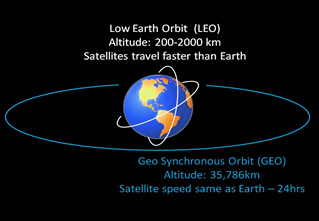

20th October 2022 (7 Topics)
Context
In a recent study, it has highlighted that the Increasing carbon dioxide levels in the Earth’s atmosphere can result in a long-term decline in air density at high altitudes, which can further lead to extend the lifetime of space debris and intensify the likelihood of satellites collisions with those space debris.
Background
- There were 5,000 active and defunct satellites in low Earth orbit as on March 2021.
- The number of defunct satellites in low earth orbit — altitude up to 2,000 kilometres — had increased by 50 per cent over the last two years.
About
What is Space debris?
- Most Space debris comprises human-generated objects, such as pieces of spacecraft, tiny flecks of paint from a spacecraft, parts of rockets, satellites that are no longer working, or explosions of objects in orbit flying around in space at high speeds.
- Most “space junk” is moving very fast and can reach speeds of 18,000 miles per hour, almost seven times faster than a bullet.

Low Earth Orbit and Carbon-dioxide levels:
- A low Earth orbit (LEO) is, as the name suggests, an orbit that is relatively close to Earth's surface. It is normally at an altitude of less than 1000 km but could be as low as 160 km above Earth – which is low compared to other orbits, but still very far above Earth's surface.
- Because carbon dioxide traps heat in the atmosphere, a lessening of atmospheric carbon dioxide concentrations would mean that more heat could escape into space.
- This would result in a net decrease in the Earth's average temperature, assuming other factors remain the same.
|
Affects Air density:
|
Key Highlights of the Study:
- Collisions of the satellites due to remained space debris could result in serious issues in a society highly dependent on satellites for navigation, mobile communications and Earth monitoring.
- Moreover, satellite destruction could cost billions of dollars.
- Further, the decreasing air density will disrupt debris management by causing planning and calculation errors.
- Source preferred:
- A global model of the entire atmosphere up to 500 km altitude was developed by Ingrid Cnossen, an independent research fellow at the British Antarctic Survey.
- Using this model, she simulated the changes in the upper atmosphere up to 2070.
Significance of the study:
- Can help to map the damage if the Satellite collision may happen.
- The location specific to space debris can be avoided.
- Help to strategise the methods useful for clearing excess satellite launches and waste generated out of it.
Challenges associated managing Space debris
- Difficulty in tracking uncontrolled descents: The variables involved make it difficult to precisely track the re-entry time and drop zone of rocket debris in uncontrolled descents.
- The factors that make this prediction extremely challenging include:
- Atmospheric drag,
- Variations in solar activity,
- Angle and rotational variation of the object, etc.
- A miscalculation of even a minute in re-entry time could result in the final resting place of the debris changing by hundreds of kilometres.
- Others:
- Unfortunately, there is an explosion risk in removing more dangerous objects.
- The issue of property rights; one can’t grab a satellite or rocket that belongs to another country without their permission.
- It is hard to eliminate space debris as there are huge chances of creating more junk while doing it.
- Most satellite operators require hours or days to plan and execute a collision-avoidance manoeuvre.

